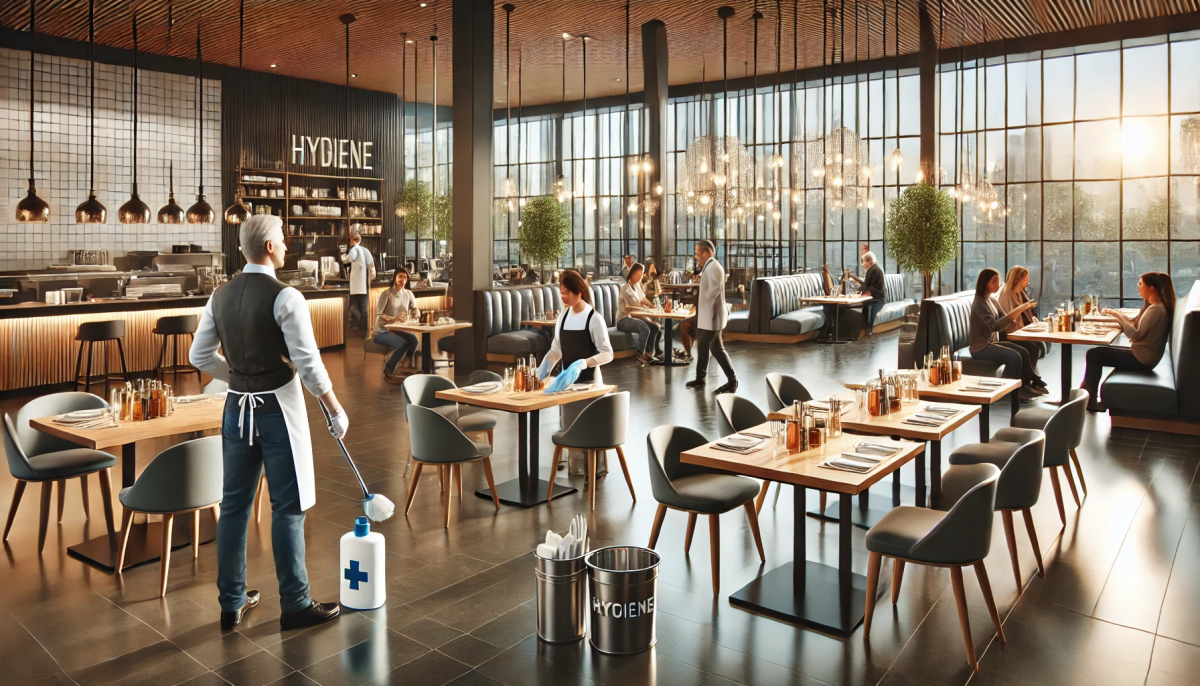In the competitive restaurant industry, meeting high expectations for service, sustainability, and satisfaction is paramount. Restaurants must balance delivering exceptional experiences with maintaining optimal revenue and efficiency. One effective strategy to enhance both guest and staff experiences is by optimizing hygiene practices. By focusing on hygiene workflows in the front of house, back of house, and restrooms, restaurants can create a more organized and inviting environment.
Front of House: The First Impression Matters
The front of house is the first area guests encounter, and its cleanliness can make a lasting impression. A well-maintained front of house can turn first-time visitors into loyal patrons. Here are some strategies to ensure this area runs efficiently:
1. Controlled Dispensing Systems: Soap and sanitizer dispensers can be unexpected time drains. Switching to one-at-a-time and controlled dispensers reduces waste and minimizes the frequency of refills, allowing staff to focus on other essential tasks.
2. Hand Sanitizer Accessibility: Placing hand sanitizers in convenient, visible locations underscores your commitment to hygiene for both guests and employees. Utilize a mix of sensor-controlled dispensers and free-standing pump bottles for maximum coverage.
3. Sustainable Products: Customers are increasingly aware of environmental impacts. Using responsibly sourced products, such as recycled material wipers and controlled dispensers, demonstrates your commitment to sustainability and can even attract environmentally conscious customers willing to pay more for visible green practices.
Back of House: Streamlining Efficiency and Cleanliness
Creating an unforgettable meal involves more than just good ingredients. Efficient hygiene practices in the kitchen can enhance service quality. Consider these tips for the back of house:
1. Versatile Cleaning Products: Simplified cleaning tools, such as absorbent cloths with scrubbing capabilities, save time and streamline hygiene tasks, improving overall kitchen efficiency.
2. Disposable Cleaning Cloths: Replacing textile cloths with disposable ones reduces laundry loads and contamination risks. Disposable cloths offer consistent quality and performance, making them a reliable hygiene tool.
3. Color-Coded Zones: Assigning different colors to various kitchen zones helps prevent cross-contamination. Ensure that tools are not moved between zones and emphasize hand washing, using paper towels to dry hands and minimize germ transfer.
Restrooms: Enhancing Guest Experience
Clean restrooms significantly influence guest satisfaction and reviews. Implement these restroom-specific hygiene tips to maintain a positive guest experience:
1. Efficient Dispensers: Quick and easy-to-refill dispensers prevent service interruptions. This ensures guests always find stocked dispensers, enhancing their experience and freeing up staff to handle other tasks.
2. Hand Towels over Air Dryers: Research shows that jet air dryers spread more bacteria than hand towels. Offering paper hand towels not only improves hygiene but also allows guests to use them to avoid touching surfaces in public restrooms.
3. Cohesive Restroom Design: A uniform, well-coordinated restroom design signals to guests that you prioritize their entire experience. A clean, thoughtfully designed restroom reflects the quality and care evident in the front and back of house, reinforcing the positive impression of your establishment.
Conclusion: Prioritizing Hygiene for Overall Success
As the demand for exceptional guest experiences grows, restaurant operators must focus on maximizing satisfaction without compromising efficiency. Prioritizing hygiene throughout your restaurant, with tailored strategies for each area, ensures a clean, inviting environment that supports great dining experiences and operational success.
